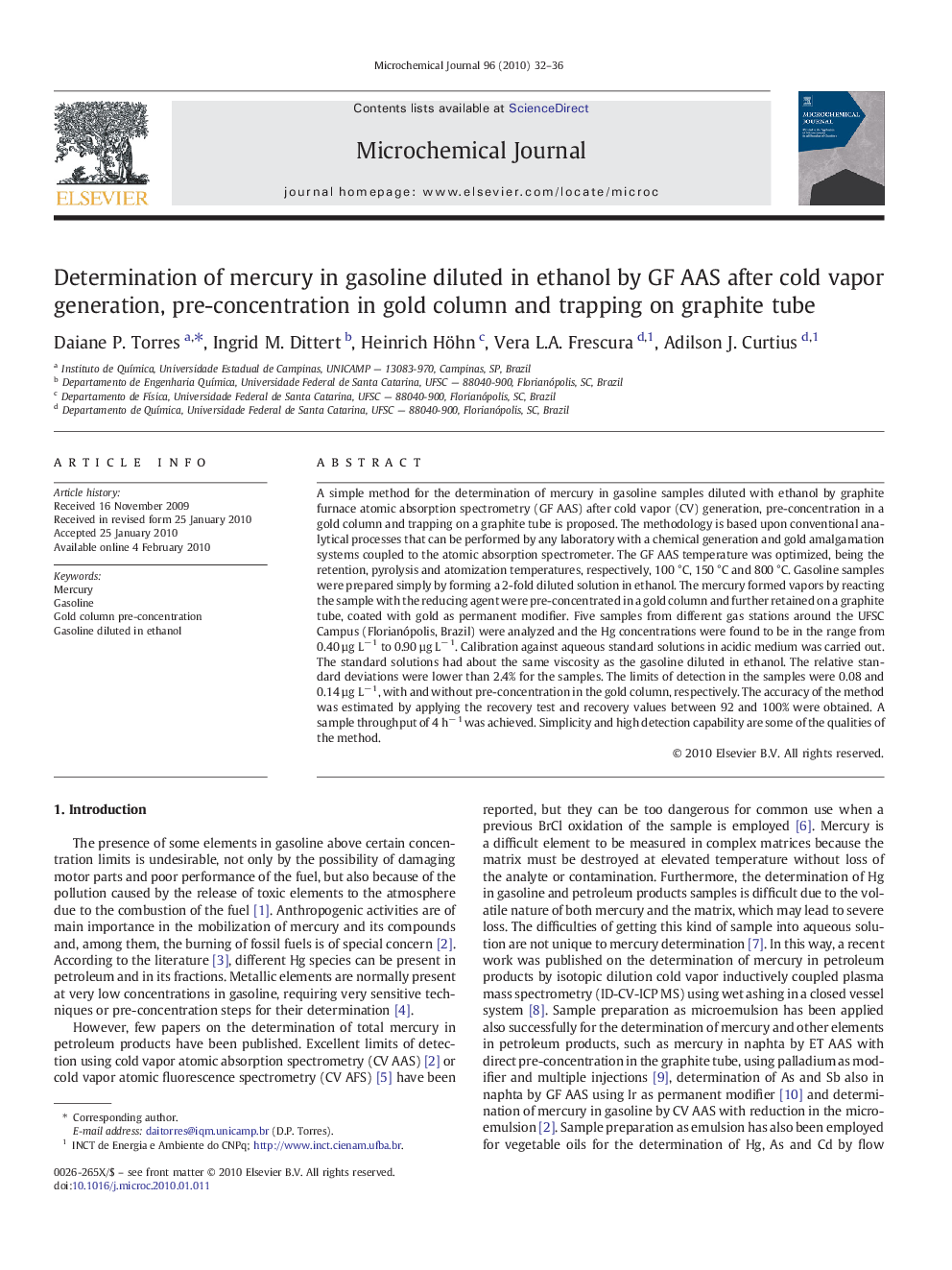| Article ID | Journal | Published Year | Pages | File Type |
|---|---|---|---|---|
| 1227820 | Microchemical Journal | 2010 | 5 Pages |
A simple method for the determination of mercury in gasoline samples diluted with ethanol by graphite furnace atomic absorption spectrometry (GF AAS) after cold vapor (CV) generation, pre-concentration in a gold column and trapping on a graphite tube is proposed. The methodology is based upon conventional analytical processes that can be performed by any laboratory with a chemical generation and gold amalgamation systems coupled to the atomic absorption spectrometer. The GF AAS temperature was optimized, being the retention, pyrolysis and atomization temperatures, respectively, 100 °C, 150 °C and 800 °C. Gasoline samples were prepared simply by forming a 2-fold diluted solution in ethanol. The mercury formed vapors by reacting the sample with the reducing agent were pre-concentrated in a gold column and further retained on a graphite tube, coated with gold as permanent modifier. Five samples from different gas stations around the UFSC Campus (Florianópolis, Brazil) were analyzed and the Hg concentrations were found to be in the range from 0.40 µg L− 1 to 0.90 µg L− 1. Calibration against aqueous standard solutions in acidic medium was carried out. The standard solutions had about the same viscosity as the gasoline diluted in ethanol. The relative standard deviations were lower than 2.4% for the samples. The limits of detection in the samples were 0.08 and 0.14 µg L− 1, with and without pre-concentration in the gold column, respectively. The accuracy of the method was estimated by applying the recovery test and recovery values between 92 and 100% were obtained. A sample throughput of 4 h− 1 was achieved. Simplicity and high detection capability are some of the qualities of the method.
